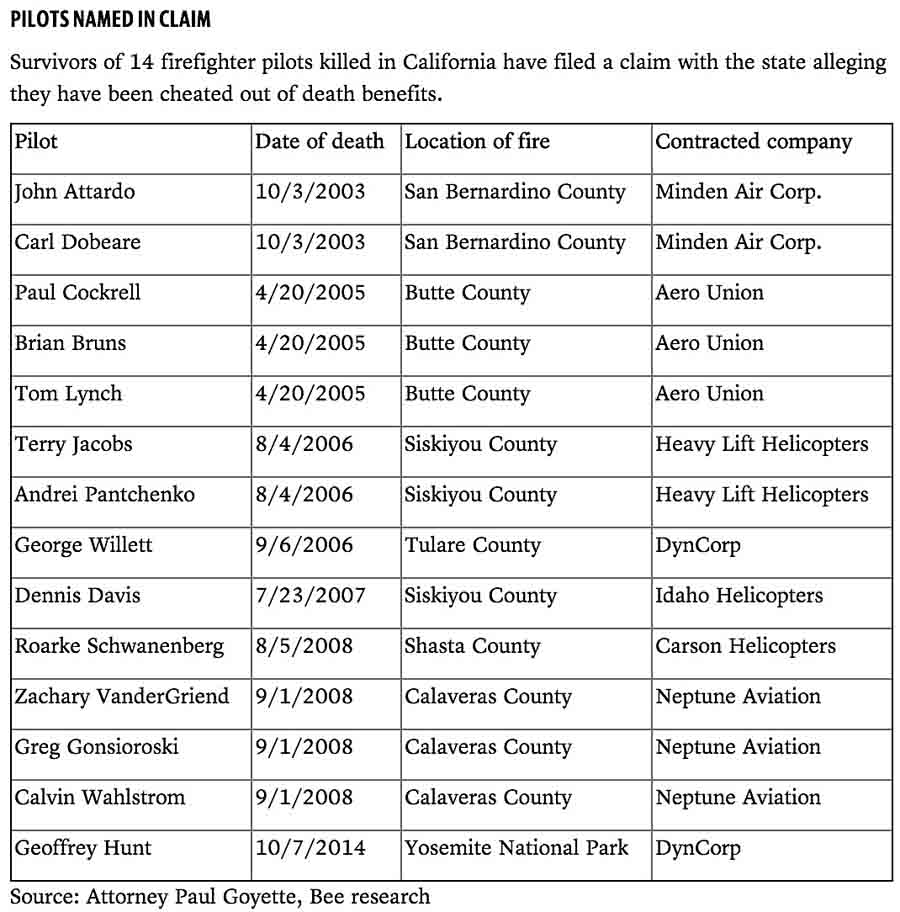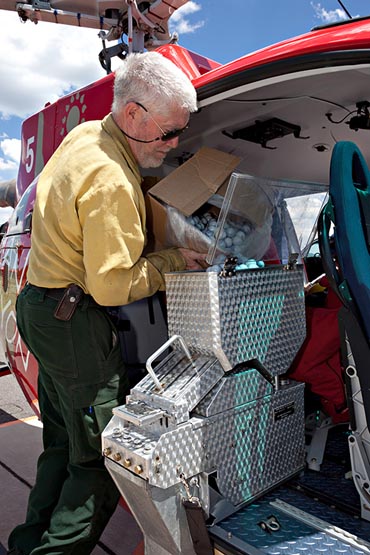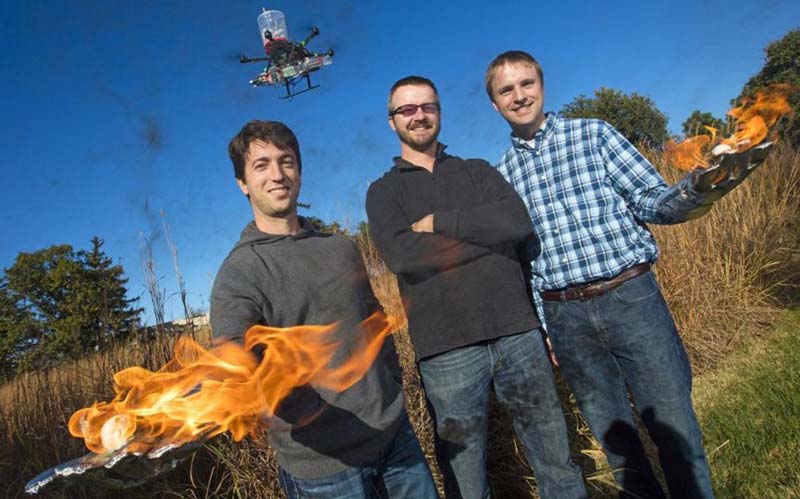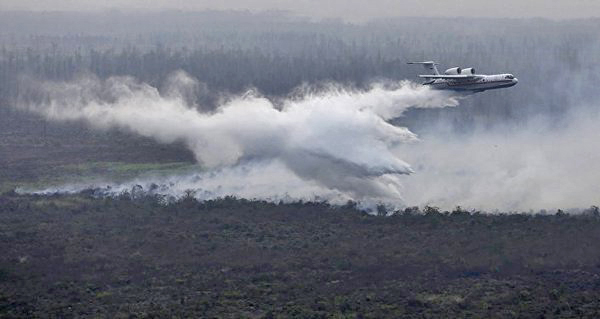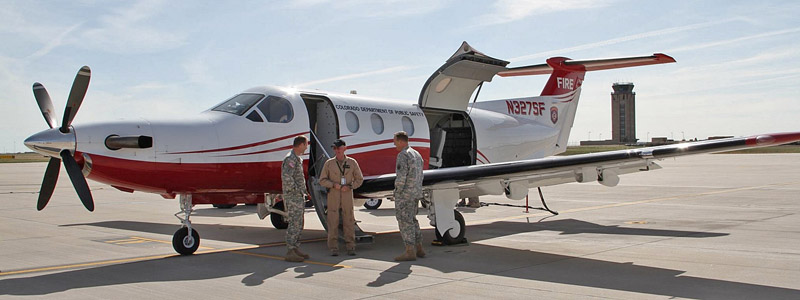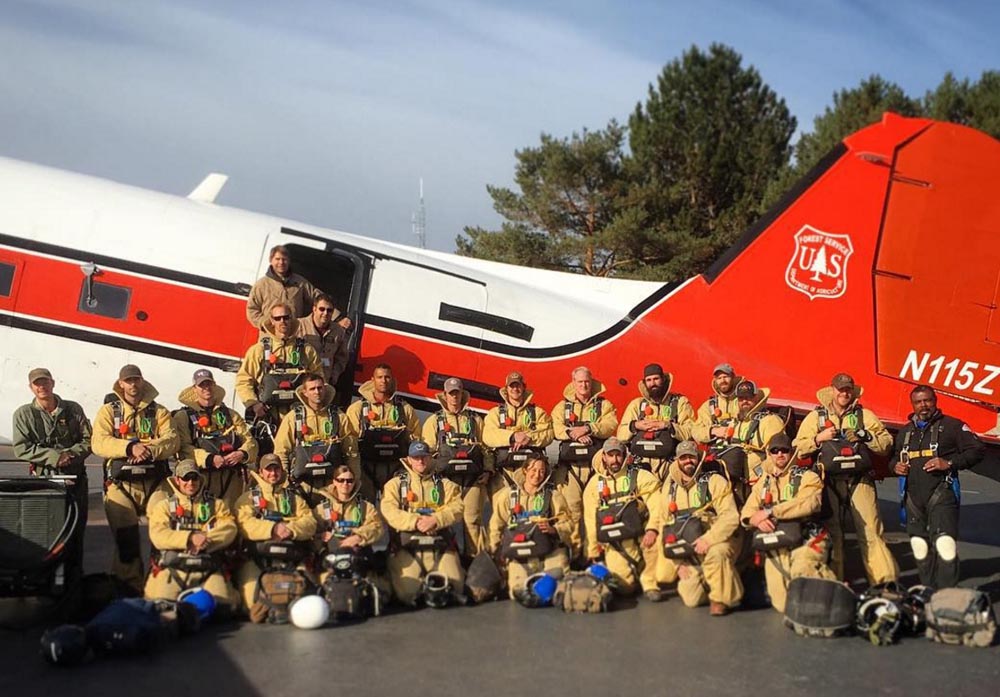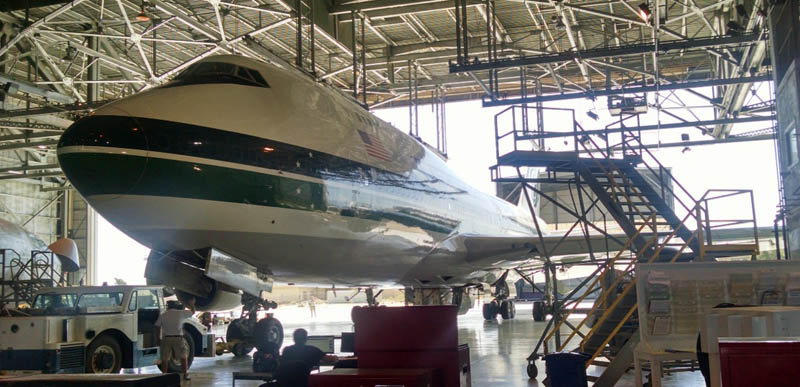
That inspection process, which was about 60 percent complete on November 1, should wrap up in November, after which it will remain at the facility for installation of the constant flow retardant dispersal system.
The first version of the 19,600-gallon Supertanker that Evergreen built was in a 747-200 freighter with roll-on/roll-off retardant tanks mounted on pallets. Later they built another version in a non-freighter 747-100 which required a lighter-weight set of tanks and a system suitable for that aircraft. The original heavier tanks were put into storage at Marana, Arizona and for a while were lost after Evergreen went into bankruptcy.

Bob Soelberg, the Senior VP and Program Manager for Global Supertanker told us:
Earlier this year, Global SuperTanker purchased all the physical assets and intellectual property related to the SuperTanker except the -100 airframe itself. The original, heavier set of tanks were located and shipped to Victorville along with the other tanks, controls and all spare parts. The heavier tanks will be installed in the -400 following minor modifications that will eliminate the RO/RO capability.
This latest, or third generation Supertanker (with more powerful engines) will have a new FAA registration number, N744ST, when the aircraft is painted following the C Check and the modifications required to install the tank system.
Some of the maintenance tasks being done at Victorville include:
- testing for skin separation from the frames,
- evaluation of the trailing edge flap system,
- removing the APU, which has been inspected and shipped to the vendor for detailed inspection and AD compliance work.
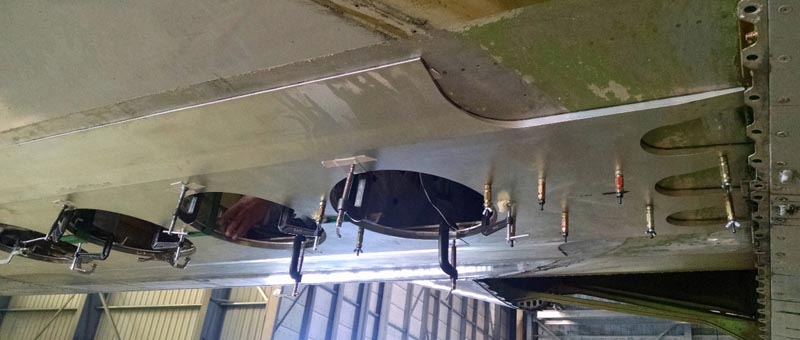
One of the more complex tasks of installing the retardant system is cutting four 16-inch holes in the belly of the aircraft, and installing the nozzles, the connectors to the tanks, and a skin doubler system around the nozzles. The doubler, attached with approximately 1,300 rivets, will reinforce the structure around the nozzles and the connectors.
While this is being done, concurrent work involves modifications on the flight deck to install the monitoring and control panels used to activate the system.
Evergreen’s 747 SuperTanker first dropped on a fire in 2009 and last received Call When Needed contracts from CAL FIRE and the U.S. Forest Service in 2013. When it received the CWN contract the aircraft had been sitting at Marana without engines and needed a million-dollar “C” check in addition to other maintenance. The company decided that with an expensive expedited “C” check and the other needed work, it could have been ready to fight fire about the time the 2013 western fire season was drawing to a close. And the CWN contract had no guarantee of any revenue. So Bob Soelberg, the Vice President of Evergreen Supertanker Services at the time, said they would wait until the next year to get the maintenance done. A few months later, bankruptcy, and the company ceased to exist.
Jim Wheeler, President and CEO of Global SuperTanker Services which will be located in Colorado Springs, said they have hired most of the core personnel that worked on the SuperTanker program at Evergreen, including Mr. Soelberg who managed the program there. The Chief Pilot is Cliff Hale who has previous experience as an air tanker pilot.
The retardant is forced from the aircraft by compressed air using the same principle seen in the transportable Modular Airborne FireFighting System (MAFFS) that can be installed in a few hours into C-130s operated by the military. Unlike the newest version of the MAFFS2 which has two on-board air compressors, the SuperTanker will rely on suitable air compressors to be pre-positioned at an air tanker base. When MAFFS are deployed they meet up with one of the six specialized air compressor systems managed by the U.S. Forest Service that can refill the air tanks in 14 minutes when the on-board compressors fail to work properly, which is not uncommon according to a MAFFS crew member we talked with.
In August Mr. Wheeler told us they will consider installing an air compressor in a year or so.
Articles on Fire Aviation tagged “747”.
Articles on Wildfire Today tagged “747”.


